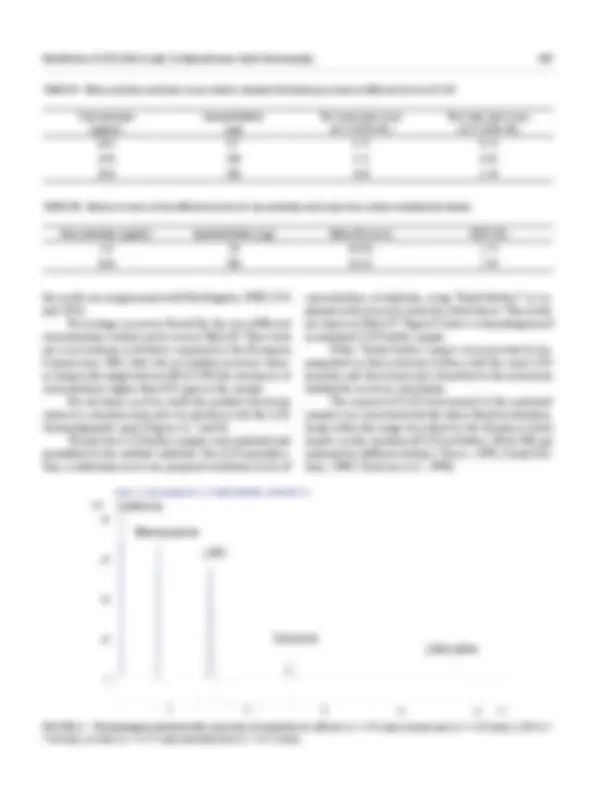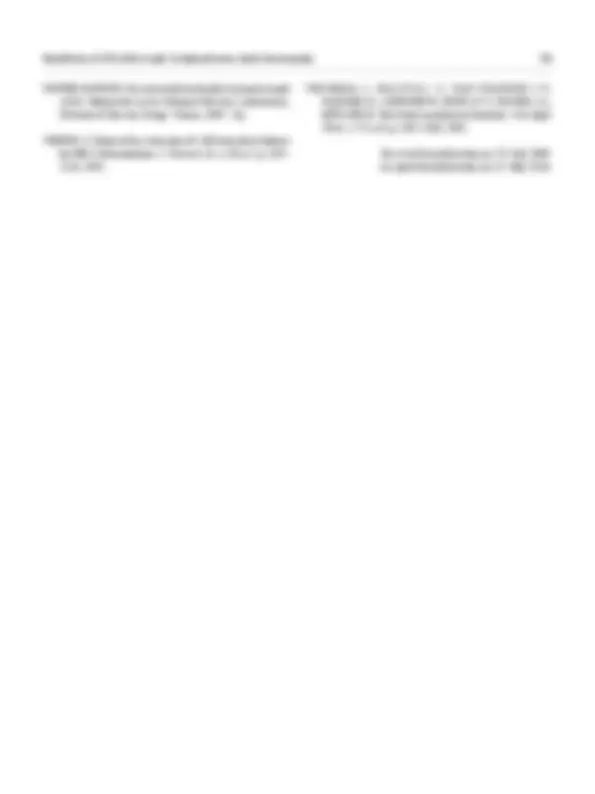







Estude fácil! Tem muito documento disponível na Docsity

Ganhe pontos ajudando outros esrudantes ou compre um plano Premium


Prepare-se para as provas
Estude fácil! Tem muito documento disponível na Docsity
Prepare-se para as provas com trabalhos de outros alunos como você, aqui na Docsity
Os melhores documentos à venda: Trabalhos de alunos formados
Prepare-se com as videoaulas e exercícios resolvidos criados a partir da grade da sua Universidade
Responda perguntas de provas passadas e avalie sua preparação.

Ganhe pontos para baixar
Ganhe pontos ajudando outros esrudantes ou compre um plano Premium
Comunidade
Peça ajuda à comunidade e tire suas dúvidas relacionadas ao estudo
Descubra as melhores universidades em seu país de acordo com os usuários da Docsity
Guias grátis
Baixe gratuitamente nossos guias de estudo, métodos para diminuir a ansiedade, dicas de TCC preparadas pelos professores da Docsity
Noções gerais sobre outras ciências forenses
Tipologia: Resumos
1 / 9

Esta página não é visível na pré-visualização
Não perca as partes importantes!






*Correspondence: P. A. Marinho. Instituto de Criminalística de Minas Gerais. Rua Juiz de Fora, 400 - Bairro Barro Preto - 30180-060 - Belo Horizonte - MG, Brasil. E-mail: pabloalvesmarinho@yahoo.com.br Article Brazilian Journal of Pharmaceutical Sciences vol. 46, n. 4, out./dez., 2010
(^1) Institute of Criminology of Minas Gerais, Belo Horizonte, 2 Toxicology Laboratory, Pharmacy College, Federal University of Minas Gerais In the present study, a method using high performance liquid chromatography to quantify LSD, in blotter papers seized in Minas Gerais, was optimized and validated. Linearity, precision, recovery, limits of detection and quantification, and selectivity were the parameters used to evaluate performance. The samples were extracted with methanol:water (1: 1) in an ultra-sound bath. The linearity between 0. and 20.00 μg/mL (0.5 and 200.0μg of LSD/blotter) was observed with satisfactory mean intra and inter assay precision (RSDr = 4.4% and RSDR = 6.4%, respectively) and with mean recoveries of 83.4% and 84.9% to the levels of 1.00 and 20.00 μg/mL (10 and 200μg LSD/blotter). The limits of detection and quantification were 0.01 and 0.05 μg/mL, respectively (0.1 and 0.5 μg of LSD/blotter). The samples of blotters (n =22) were analyzed and the mean value of 67.55 μg of LSD/blotter (RSD=27.5%) was found. Thus, the method used showed satisfactory analytical performance, and proved suitable as an analytical tool for LSD determination in illicit samples seized by police forces. Uniterms: LSD/detection. Forensic chemistry. Analytical toxicology. In-house validation. High Performance Liquid Chromatography/quantitative analysis. No presente trabalho, um método utilizando cromatografia líquida de alta eficiência foi otimizado e validado para quantificar o LSD em selos apreendidos em Minas Gerais. A linearidade, precisão, recuperação, limites de detecção e quantificação e seletividade foram os parâmetros de desempenho avaliados. As amostras foram extraídas com metanol: água (1:1) em banho de ultra-som. A linearidade entre 0,05 a 20,00 mg/mL (0,5 a 200 μg LSD/blotter) foi observada com precisão média, intra e inter ensaio, satisfatória (RSDr = 4,4% e RSDR = 6,4%, respectivamente) e com recuperações médias de 83,4% e 84,9% para os níveis de LSD de 1,00 e 20,00 mg/mL (10 e 200 μg LSD/selo). Os limites de detecção e quantificação encontrados foram de 0,01 e 0,05 mg/mL, respectivamente (0,1 e 0,5 μg LSD/selo). As amostras de selos (n = 22) foram analisadas e o valor médio encontrado foi de 67,55 μg de LSD/selo (RSD% = 27,5). Desta forma, o método analítico apresentou desempenho satisfatório, capaz de ser utilizado como instrumento de análise para a determinação do LSD em amostras ilícitas apreendidas pelas forças policiais. Unitermos : LSD/detecção. Química Forense. Toxicologia analítica. Validação intralaboratorial. Cromatografia líquida de alta efeciência/análise quantitativa.
696 P. A. Marinho, E. M. A. Leite
MATERIAL AND METHODS
METHODS
FIGURE 1 - LSD chemical structure (P.M.: 323.432; CAS: 50-37-3).
698 P. A. Marinho, E. M. A. Leite
FIGURE 3 - Amount of LSD extracted from five LSD blotter papers in each cycle. FIGURE 4 - Residual plots for outlier treatment by Jacknife standardized residuals test, demonstrating maximum and minimum allowed intervals. The horizontal lines correspond to ± (t (^) 0.975; n-2) sres. FIGURE 5 - Linear range of HPLC-UV method for LSD determination, demonstrating curve equation and determination coefficient. TABLE I - Statistical parameters for linear regression evaluation Statistic Value N 14 Normality R 0. P p>0. Homoscedasticity tL 0. P 0. Independence D 1. P p>0. n: data number; R: Ryan-Joiner correlation coefficient; tL: Levene statistic t; p:significance; D: Durbin-Watson statistic
Quantification of LSD in illicit samples by high performance liquid chromatography (^699) TABLE II - Mean and intra and inter assay relative standard deviation precision at different levels of LSD Concentration (μg/mL) Amount/blotter (μg) Precision intra assay (n=5) RSD (%) Precision inter assay (n=5) RSD (%) 0.05 0.5 4.75 8. 10.0 100 4.51 6. 20.0 200 3.84 4. TABLE III - Mean recovery at two different levels of concentration and respective relative standard deviation Concentration (μg/mL) Amount/blotter (μg) Mean Recovery RSD (%) 1.0 10 83.84 2. 20.0 200 84.85 7.
FIGURE 6 - Chromatogram obtained after injection of standards of caffeine (tr = 1.92 min), benzocaine (tr = 4.33 min), LSD (tr = 7.64 min), cocaine (tr = 12.77 min) and lidocaine (tr = 23.51 min).
Quantification of LSD in illicit samples by high performance liquid chromatography (^701) TABLE IV - LSD in 22 blotters seized by Police of Minas Gerais state LSD (μg) Blotters 31.51 17 33.91 19 51.02 18 53.36 2 53.72 4 54.43 1 55.08 3 55.34 21 57.58 20 58.72 5 62.79 15 65.07 22 76.25 16 78.11 8 81.69 12 81.98 6 85.10 11 86.82 10 87.63 7 88.58 9 92.88 13 94.60 14 Mean value: 67.55± 18.61 (CV= 27.5%) FIGURE 9 - Chromatogram after injection of blotter extract in methanol: water (1:1) tr LSD = 7.86 min.
REFERENCES BRASIL. ANVISA. Resolução da diretoria colegiada - RDC nº 07, de 26 de fevereiro de 2009. Available at: http://e- legis.anvisa.gov.br/leisref/public/ showAct.php?id=35907. Access on: 20 mar. 2009. BROWN, M.B.; FORSYTHE, A.B. Robust tests for the equality of variances. J. Am. Stat. Assoc. , v.69, n.346, p.364-367,
BURKE, S. Regression and calibration_. LC•GC Europe Statistics and Data Analysis Online Supplement._ p.13-18,
702 P. A. Marinho, E. M. A. Leite CASHMAN, J. LSD. São Paulo: Perspectiva, 1970. 155 p. CHUNG, A.; HUDSON, J.; MCKAY, G. Validated ultra- performance liquid chromatography-tandem mass spectrometry method for analyzing LSD, iso-LSD, nor- LSD, and O-H-LSD in blood and urine. J. Anal. Toxicol. v.33, n.5, p.253-259, 2009. DRAPER, N.; SMITH, H. Applied regression analysis. New York: Wiley, 1998. 706 p. DURBIN, J.; WATSON, G.S. Testing for serial correlation in least squares regression II. Biometrika , v.38, n.1-2, p.159- 178, 1951. EUROPEAN COMMISSION (EC). Commission decision 2002/657/EC of 12 August 2002. Implementing Council Directive 96/23/EC concerning performance of analytical methods and the interpretation of results. Off. J. Eur. Commun ., v.45, n.221, p.8-36,2002. FAVRETTO, D.; FRISON, G.; MAIETTI S.; FERRARA, S.D. LC-ESI-MS/MS on an ion trap for the determination of LSD, iso -LSD, nor -LSD and 2-oxo-3-hydroxy-LSD in blood, urine and vitreous humor. Int. J. Legal Med. , v.121, n.4, p.259-265, 2007. GERÊNCIA GERAL DE LABORATÓRIOS DE SAÚDE PÚBLICA-GGLAS. Levantamento de laboratórios analíticos de Toxicologia Forense. ANVISA – REBLAS. 2004, 256p. Available at: http://www.anvisa.gov.br/reblas/ pesquisa.htm. Access on: 23 apr. 2008. HORWITZ, W. Protocol for the design, conduct and interpretation of method-performance studies. Pure Appl. Chem. , v.67, n.2, p.331-343, 1995. MOFFAT, A.C.; OSSELTON M.D.; WIDDOP, B. Clarke’s analysis of drugs and poisons. 3.ed. London: The Pharmaceutical Press, 2004. 2101 p. NICHOLS, D.E. Hallucinogens. Pharmacol. Ther. , v.101, n.2, p.131-181, 2004. OBSERVATÓRIO BRASILEIRO DE INFORMAÇÕES SOBRE DROGAS (OBID). Apreensão de drogas. Available at: http://www.obid.senad.gov.br/portais / OBID/biblioteca/documentos/Dados_Estatisticos/ indicadores/327433.pdf. Accessed on: 14th^ June 2009. POCKLINGTON, W.E. Harmonized Protocols for the Adoption of Standardized Analytical Methods and for the Presentation of their Performance Characteristics_. Pure Appl. Chem.,_ v.62, n.1, p.149-162, 1990. POSTIGO, C.; ALDA, M.J.L.; VIANA M.; QUEROL, X.; ALASTUEY, A.; ARTINANO, B.; BARCELO, D. Determination of drugs of abuse in airborne particles by pressurized liquid extraction and liquid chromatography- electrospray-tandem mass spectrometry. Anal. Chem., v.81, n.11, p.4382-4388, 2009. ROCHA, O.G.F. Estudo da intoxicação por estrôncio em pacientes portadores de insuficiência renal crônica, submetidos a tratamento dialítico. Belo Horizonte, 2003. 106 f. [Tese Doutorado em Ciências Farmacêuticas. Faculdade de Farmácia. Universidade Federal de Minas Gerais]. ROYAL SOCIETY OF CHEMISTRY (RSC). Analytical Methods Committee - Technical Brief : Is my calibration linear? RSC, 2005. Available at: http://www.rsc.org/pdf/ amc/brief3.pdf. Accessed on: 20.oct. RYAN, T.A.; JOINER, B.L. Normal probability plots and tests for normality. The State College : Pennsylvania State University , 1976. Available at: <http://www.minitab.com/ uploadedFiles/Shared_Resources/Documents/Articles/ normalprobability_plots.pdf>. Accessed on: 14th^ jun. 2009. SOUZA, S.V.C. Procedimento para validação intralaboratorial de métodos de ensaio: delineamento e aplicabilidade em análises de alimento. Belo Horizonte, 2007. 297 f. [Tese de Doutorado em Ciências de Alimentos. Faculdade de Farmácia. Universidade Federal de Minas Gerais]. THOMPSON, M.; ELLISON, S.L.R.;WOOD, R. Harmonized guidelines for single-laboratory validation of methods of analysis. Pure Appl. Chem ., v.74, n.5, p.835-855, 2002. THOMPSON, M. The amazing Horwitz function. AMC Technical Brief, n.17, 2004. Available at: <http://www.rsc. org/images/brief17_tcm18-25961.pdf.> Accessed on: 20. Oct. 2009 UNITED NATIONS. Office on drugs and crime. Terminology and information on drugs. 2.ed. New York, 2003. 72 p.